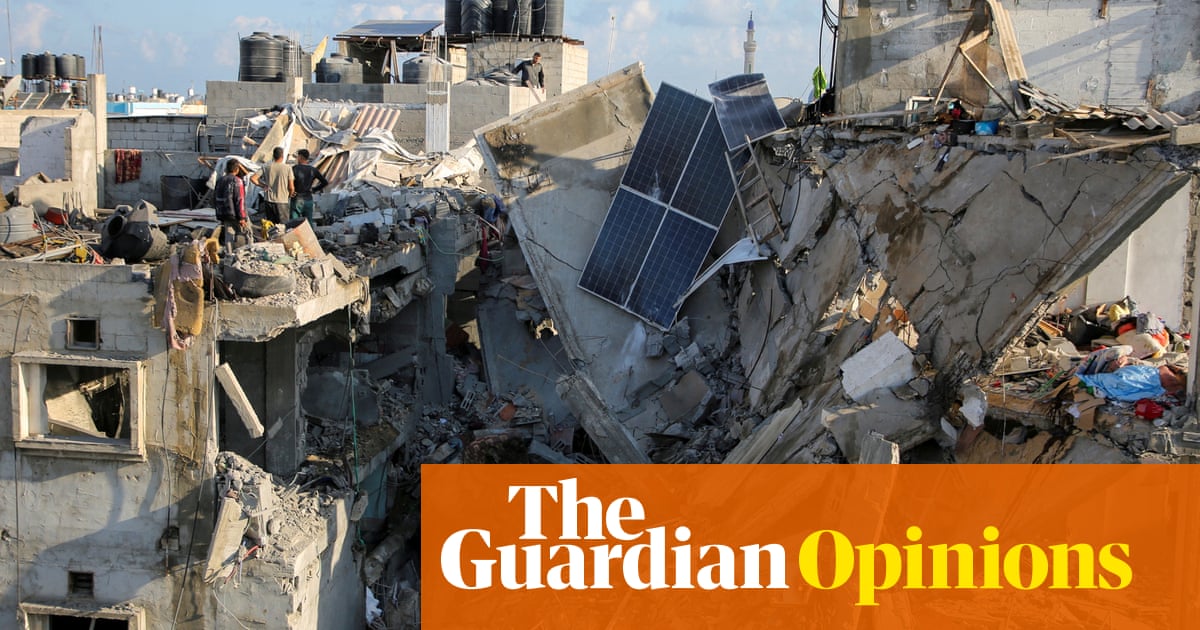
Jessica Cornwell was silent in labour. During the forceps and ventouse delivery of her twins she haemorrhaged, and her life was saved by a doctor who inserted their hand into her womb to remove her placenta. One of her sons was rushed to the newborn intensive care unit. “I couldn’t talk,” she writes in Birth Notes, her memoir of recovery from the post-traumatic stress disorder (PTSD) she developed. “I couldn’t say anything at all.”
Cornwell now knows that she entered a dissociative state during the birth. “I started dissociating pretty much the minute that I went into labour, and a lot of the midwives commented on how quiet I was. How I handled pain well,” she tells me. Her book, a visceral, poetic account of her journey to diagnosis and treatment, and a damning indictment of the lack of knowledge of and research into birth trauma, was originally going to be called Where There Are No Words.
I’ve been thinking a lot about words and language since I gave birth, how good communication can save a person from becoming traumatised. Mental health professionals tell me that it is often when patients (and their birth partners) feel that communication has been poor, when they have no idea what is happening to them or to their body, that PTSD symptoms can result. “Intense fear tends to be one of the main causes of PTSD, and so, if she feels that everything is out of control, no one is telling her what’s happening, no one is listening to her, all of that combined can cause PTSD,” says Dr Kim Thomas of the Birth Trauma Association. “A lot of women will say ‘I thought my baby was about to die’ or they think that they are about to die, but none of the hospital staff seem to be cognisant of this.”
According to one study, every third woman would describe their experience of giving birth as traumatic, yet until relatively recently childbirth wasn’t considered an event that could cause PTSD. It was normal, natural. According to the Diagnostic and Statistical Manual of Mental Disorders 3, PTSD was the result of events that were “generally outside the range of usual human experience”. This was only removed in 2013, and childbirth is still not explicitly listed as a potential stressor, though experts are finally in agreement that it can be.
Nevertheless, birth trauma is often misdiagnosed as postnatal depression. It took Cornwell two years to get her diagnosis having been told she had postnatal depression, and again, where there should have been language there was instead an absence. Birth trauma and pregnancy simply weren’t included on the “life events” checklist she was given. She found herself wondering if “the absence of traumatic categories related to motherhood was accidental, an oversight, or a deliberate omission – or if the research simply hasn’t caught up yet”.
Watching Cornwell, who is a close friend, undergo her quest to put these experiences into words has been awe-inspiring. She is not alone in this. Sometimes it is several wines down, told almost in the style of a standup routine. At other times it is mentioned almost casually, like the occasion when a woman in a cafe handed me a coffee and gestured at the child in the playground opposite. “I only have one,” she said, “because they took my womb out afterwards.”
Finding the words, building a narrative, is what helps processing. I have received an outpouring of emails from women with birth trauma, often long, detailed accounts using medical terminology. These are women who have asked to see their notes so that they can work out what has happened to them, or who have attended debriefings. Always, the questions are the same: “Why wasn’t I listened to?”; “Why did no one tell me what was happening?”; “Why were my requests for pain relief ignored?” (asking for pain relief and not being granted it is a recurring theme); “Why was this done to me without consent?”
Sometimes there are serious failings of care, but often it seems a traumatic birth is characterised by such communication gaps. Cornwell stresses that raising awareness of birth trauma is not about demonising overworked medical professionals, but working out how to improve the experience of birth for future patients so that we don’t have to hear these stories time and time again. Entering a dissociative state, as she did, is a signpost of future PTSD, as is previous trauma such as sexual violence. She thinks that training to help doctors and midwives identify women who are unusually silent in labour so that they can be given help grounding them if they are dissociating could be a positive development. Thomas highlights a study in which women who were extra vulnerable had a “psychology alert” sticker placed on their birth notes to make medical staff aware of mental health concerns, with great success. Staff can be coached in listening skills, and more professionals have been coming to them asking for training.
I’m still making my way through the birth stories that I have been sent. Each is unique, but there are some statements that could apply to all the women writing, such as this from a mother of three who almost died during her labour and is now living with lifelong health issues: “The main thing that upsets me the most is that I had no voice. I wasn’t listened to and I wasn’t heard.”
What’s working
I am pathetically grateful to the makers of Ewan the Dream Sheep, a cuddly cartoon sheep that glows red and plays womblike sounds (yes, really), for helping my son drift off. Millions have been sold and I can understand why, because it seems to have a miraculous soporific effects. I’ve already recommended it to several friends.
What isn’t
I’d like to apologise to anyone who has been forced to witness one of my son’s recent public “poonamis”. We were, alas, a bit slow to realise that we needed to go up a nappy size.
Rhiannon Lucy Cosslett is a Guardian columnist












